Overview
The article titled "10 Essential Strategies for Your Winery Site Success" focuses on outlining pivotal strategies that wineries can implement to enhance their online presence and boost direct-to-consumer sales. It underscores the critical importance of:
- Optimizing the website for user experience
- Effectively utilizing email and social media marketing
- Integrating compelling storytelling to forge emotional connections with consumers
These elements are crucial for driving engagement and fostering sales growth in the competitive wine market.
Introduction
In an industry characterized by fierce competition and ever-evolving consumer preferences, wineries encounter the formidable challenge of distinguishing themselves in a saturated marketplace. This article explores ten essential strategies that can significantly enhance a winery's online presence and boost direct-to-consumer sales channels. By investigating innovative approaches—from optimizing website design to harnessing the power of storytelling and social media—wineries can not only attract new customers but also cultivate loyalty among their existing clientele. What are the secrets behind the successful winery sites poised to thrive in 2025, and how can these insights be leveraged to ensure sustained growth and engagement?
Enocap: Strategies for Building Robust DTC Sales Channels
To establish robust direct-to-consumer (DTC) sales channels, beverage producers must prioritize a seamless online shopping experience. This imperative begins with optimizing their websites for user experience, encompassing intuitive navigation and comprehensive product information. A well-structured site can significantly reduce bounce rates and increase conversion rates, as consumers are more likely to complete purchases when they can easily find what they need.
Integrating email promotion techniques is crucial for maintaining client involvement. Regular updates about new releases, promotions, and exclusive offers can foster loyalty and encourage repeat purchases. Moreover, leveraging social media platforms to drive traffic to online stores is essential. By showcasing unique offerings and engaging storytelling, a winery site can effectively connect directly with potential customers, enhancing brand visibility and appeal. This storytelling aspect is vital, as it helps transform casual buyers into loyal club members—a key strategy for sustainable growth and generating predictable DTC revenue.
The influence of user experience on online beverage sales cannot be overstated. Research indicates that a positive online shopping experience can yield higher sales volumes and improved client retention. Wineries that have successfully on their winery site often report increased traffic and sales growth. For instance, vineyards adopting tiered membership programs and engaging digital narratives have observed notable enhancements in customer involvement and loyalty, showcasing the efficacy of innovative DTC approaches.
By concentrating on these strategies, including tactical capital planning for debt, equity, or acquisition opportunities, businesses can effectively enhance their DTC sales channels, ensuring they remain competitive in a rapidly evolving market. Specific case studies, such as Winery X's success with their online sales growth through targeted email campaigns and social media engagement on their winery site, illustrate the potential for predictable revenue generation.
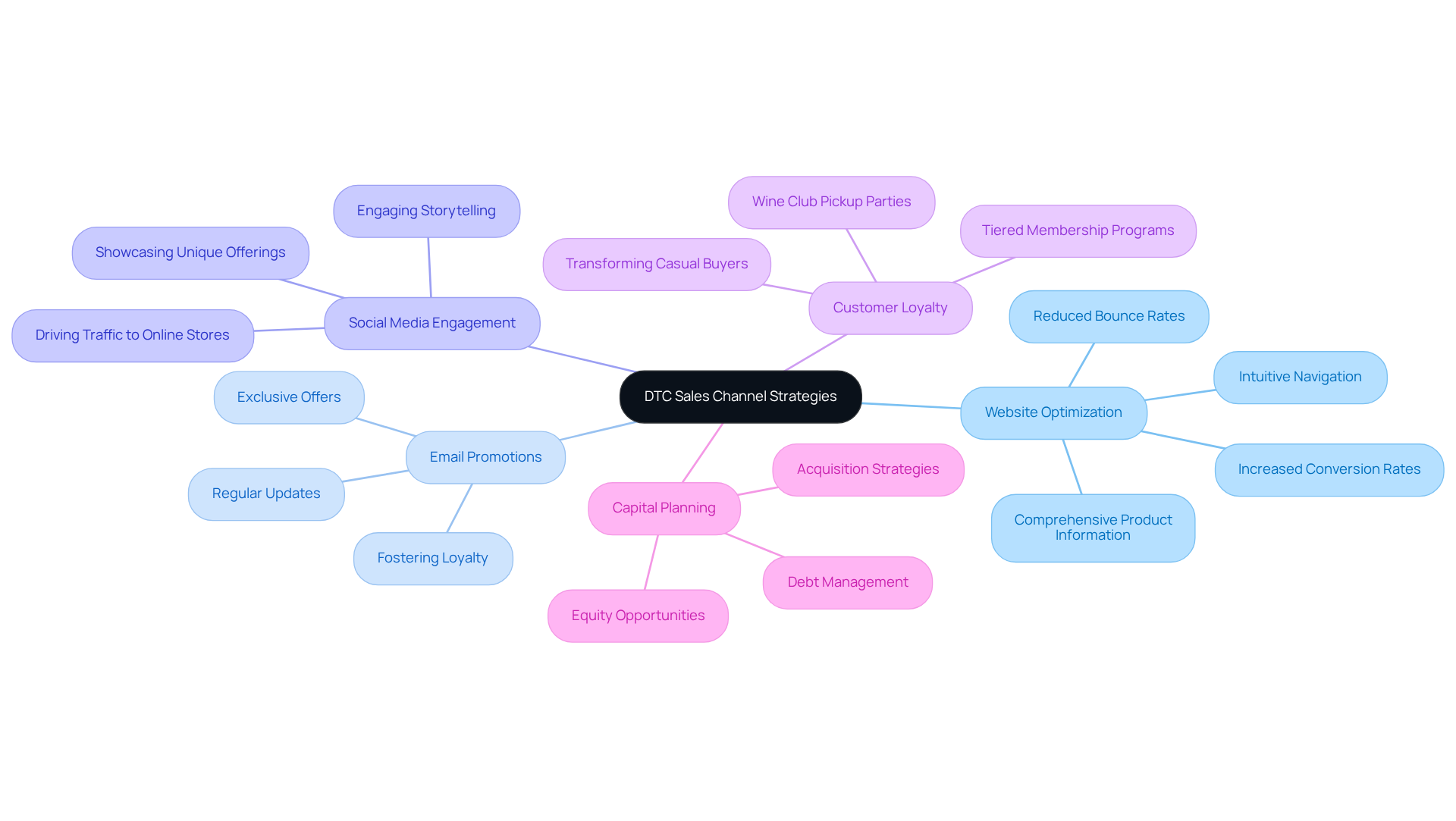
Wine Club Optimization: Enhancing Membership Engagement and Retention
To enhance involvement in wine club memberships, producers must prioritize that resonate with each member's preferences. This involves crafting personalized emails and utilizing brand storytelling to forge a narrative that connects members to the establishment's heritage and values. By offering exclusive access to limited releases and special events, wineries can deepen this connection.
It is crucial to recognize that member attrition rates can fluctuate between 28-36% each year, underscoring the urgency of adopting these strategies. Fostering a sense of community through member-only gatherings or virtual tastings can significantly bolster loyalty. Moreover, establishments that employ at least three different segmentation strategies in their communications observe renewal rates that are 16% greater than those utilizing no segmentation.
Regular feedback surveys are essential, allowing establishments to assess member needs and adjust their offerings accordingly. Customers who feel heard are twice as likely to remain loyal, reinforcing the importance of feedback mechanisms in nurturing loyalty. This method not only ensures that members feel valued but also strengthens their bond with the establishment, ultimately promoting retention and fostering sustainable growth.
Additionally, integrating strategic capital planning into these initiatives can equip the winery site with the necessary resources to enhance its direct-to-consumer channels and support long-term growth.
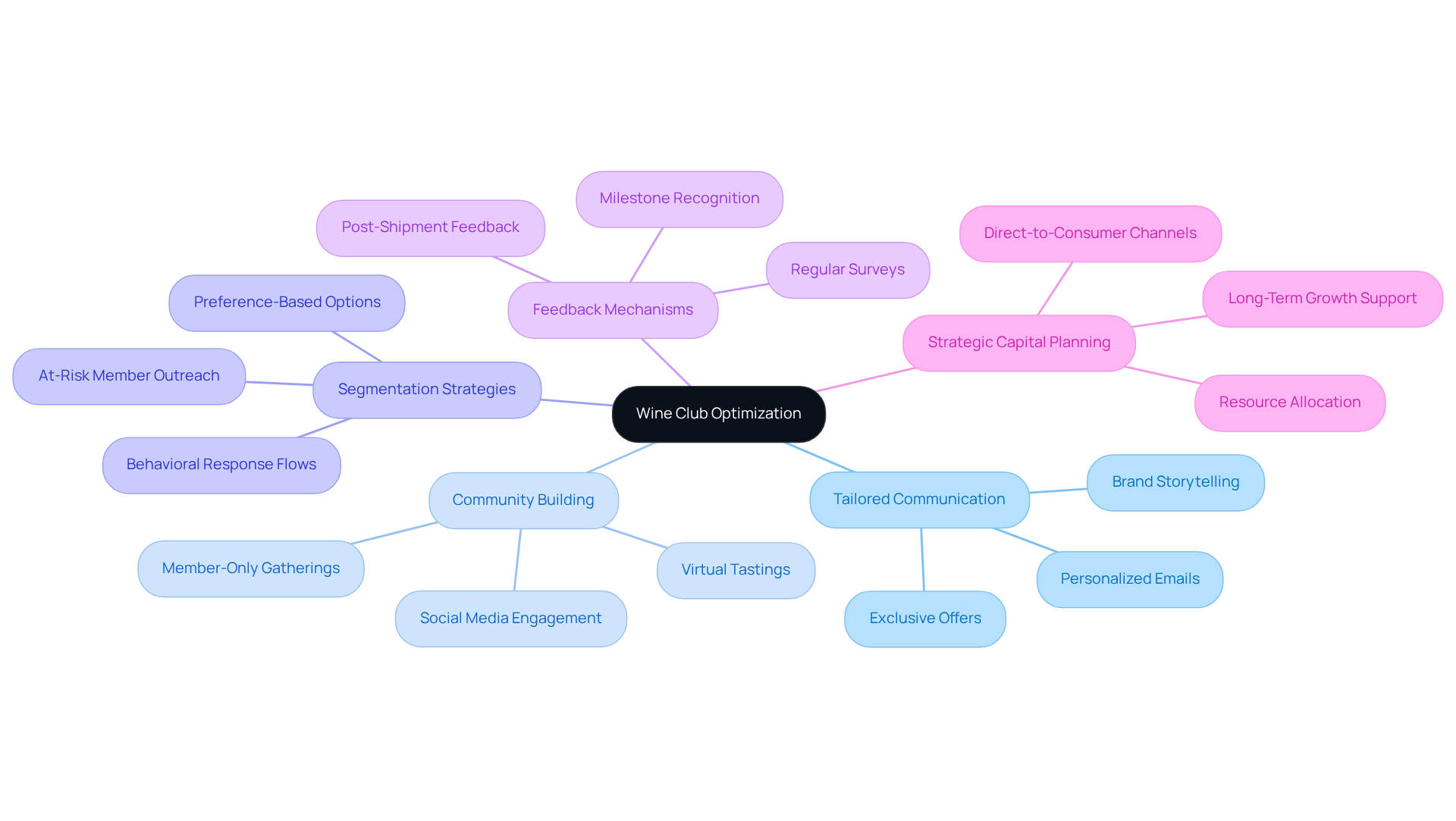
Demand Generation Techniques: Driving Customer Acquisition and Sales Growth
A winery site has the potential to significantly enhance customer acquisition through targeted marketing campaigns that showcase its unique offerings. Social media advertising is pivotal in this strategy, with 87% of buyers acknowledging its influence on their shopping decisions. By leveraging platforms like Instagram and Facebook, vineyards can create engaging content that resonates with their audience, ultimately driving traffic to their winery site.
Incorporating search engine marketing alongside social media efforts can further boost visibility. Collaborating with influencers, particularly micro-influencers who have a genuine interest in wine culture, can expand reach and build credibility. These collaborations enable vineyards to engage with specialized audiences in relatable manners, thereby boosting brand recognition and consumer loyalty.
To convert casual purchasers into dedicated club members, wineries can implement effective strategies that concentrate on and engagement. Organizing experiential events, such as beverage tastings or vineyard excursions, not only generates excitement but also nurtures personal connections with prospective clients. These interactions can lead to memorable experiences that encourage repeat visits and word-of-mouth referrals.
Additionally, implementing referral programs that reward existing customers for introducing new members can drive demand. This approach has proven effective; for instance, a vineyard experienced a 40% increase in wine club sign-ups by offering tiered membership benefits. Enocap's strategic capital advisory services can further support these initiatives by unlocking growth opportunities through tailored debt, equity, and acquisition solutions, ensuring businesses have the resources needed to scale their operations.
Overall, a multifaceted approach that combines social media advertising, influencer partnerships, and engaging events, alongside strategic capital planning, can create a robust client acquisition strategy for a winery site, ensuring it remains competitive in a rapidly evolving market.
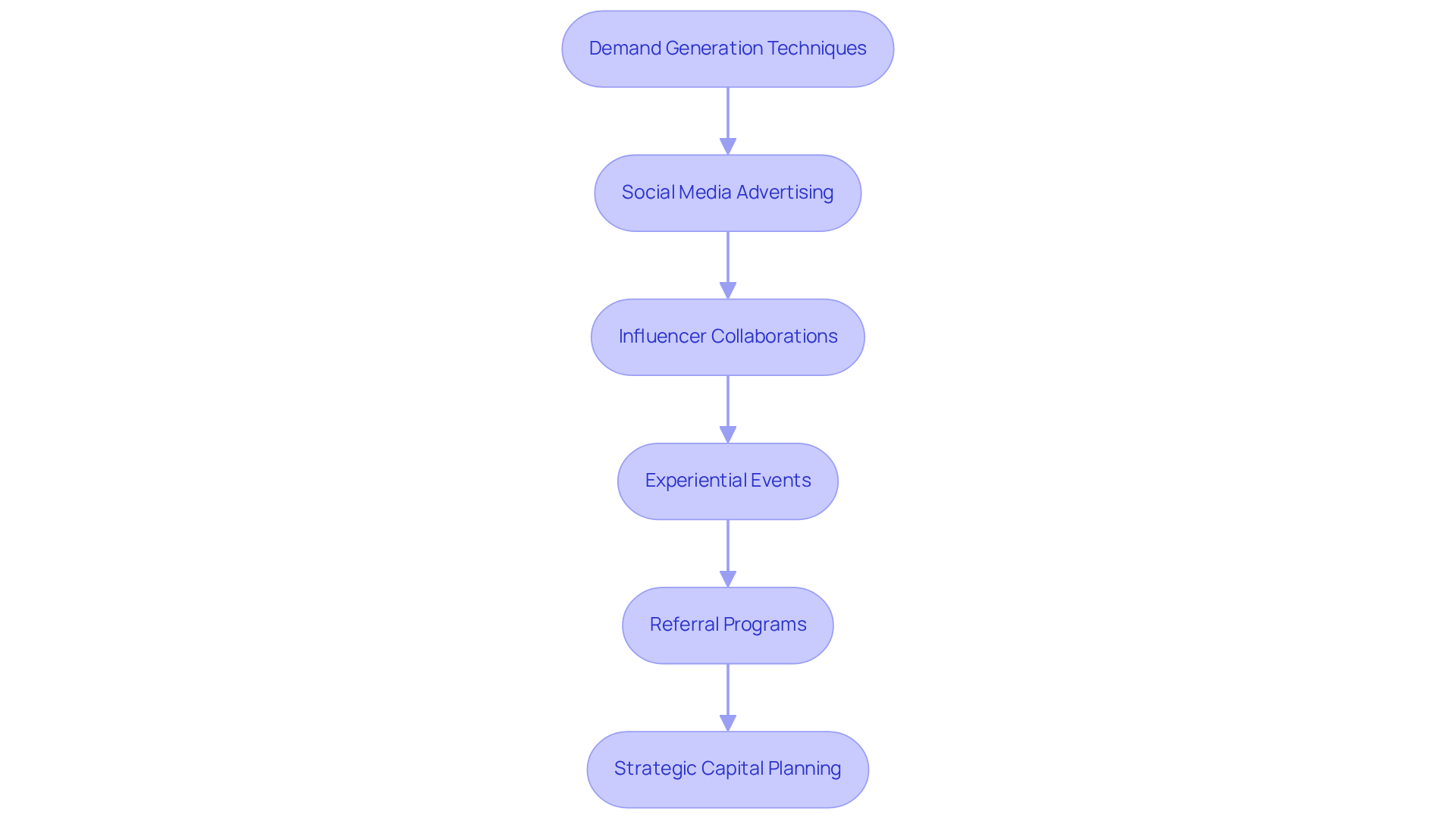
User-Friendly Website Design: Enhancing Customer Experience and Sales
To elevate client experience, vineyards must prioritize a clean, user-friendly website design that underscores mobile optimization. With more than half of vineyard website traffic stemming from , ensuring accessibility across all platforms is crucial. High-quality images and intuitive navigation menus are essential, enabling users to swiftly locate vital information.
Integrating features such as user reviews, detailed product descriptions, and a streamlined checkout process can significantly enhance user satisfaction and assist in strategic capital planning. For example, WineDirect's mobile checkout optimization, which reduced steps and incorporated multiple payment options, achieved one of the fastest checkouts in the industry, illustrating the profound impact of a user-centric interface.
Additionally, establishing a blog or content section not only provides valuable insights to visitors but also positions the establishment as an industry authority, reinforcing the brand's narrative and connection with patrons. As Jacqueline aptly stated, 'Your vineyard website isn’t merely a digital brochure; it’s your most effective DTC sales channel.'
Furthermore, optimizing website speed is vital, as slow-loading platforms can lead to client loss, underscoring the necessity for businesses to cultivate an engaging online presence that fosters loyalty and boosts sales while developing sustainable direct-to-consumer channels.
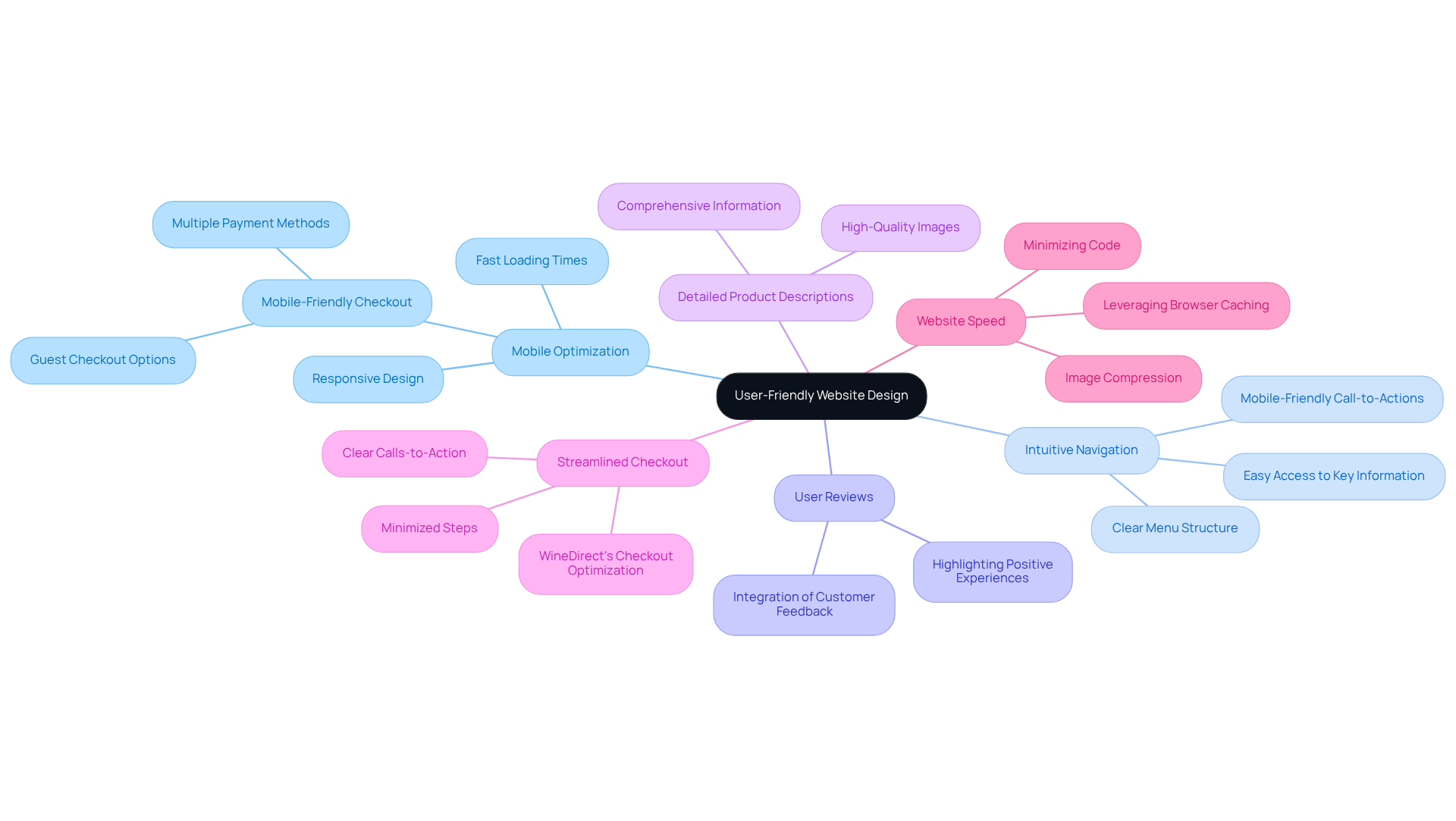
E-Commerce Integration: Expanding Market Reach and Sales Opportunities
Integrating robust e-commerce platforms is essential for winery sites aiming to expand their market reach and streamline operations. These platforms must ensure compliance with shipping regulations and incorporate age verification processes to protect user data and adhere to legal requirements. Subscription services for wine clubs have demonstrated effectiveness in improving client retention. Notably, producers like Alpha Box & Dice have reported an impressive 700% increase in monthly subscribers after transitioning to Shopify. Enocap's established direct-to-consumer approaches, including demand generation and client retention initiatives, can further enhance these efforts, transforming casual buyers into devoted club members and fostering predictable revenue growth.
Additionally, utilizing analytics tools from the Shopify ecosystem enables vineyards to track performance and customer behavior effectively. This capability provides valuable insights for optimizing marketing strategies and managing inventory. This data-driven method, combined with Enocap's , empowers vineyards to enhance their operations and promote sustainable growth in a competitive environment. By investing in these e-commerce solutions, vineyards can position themselves for success in an ever-evolving marketplace.
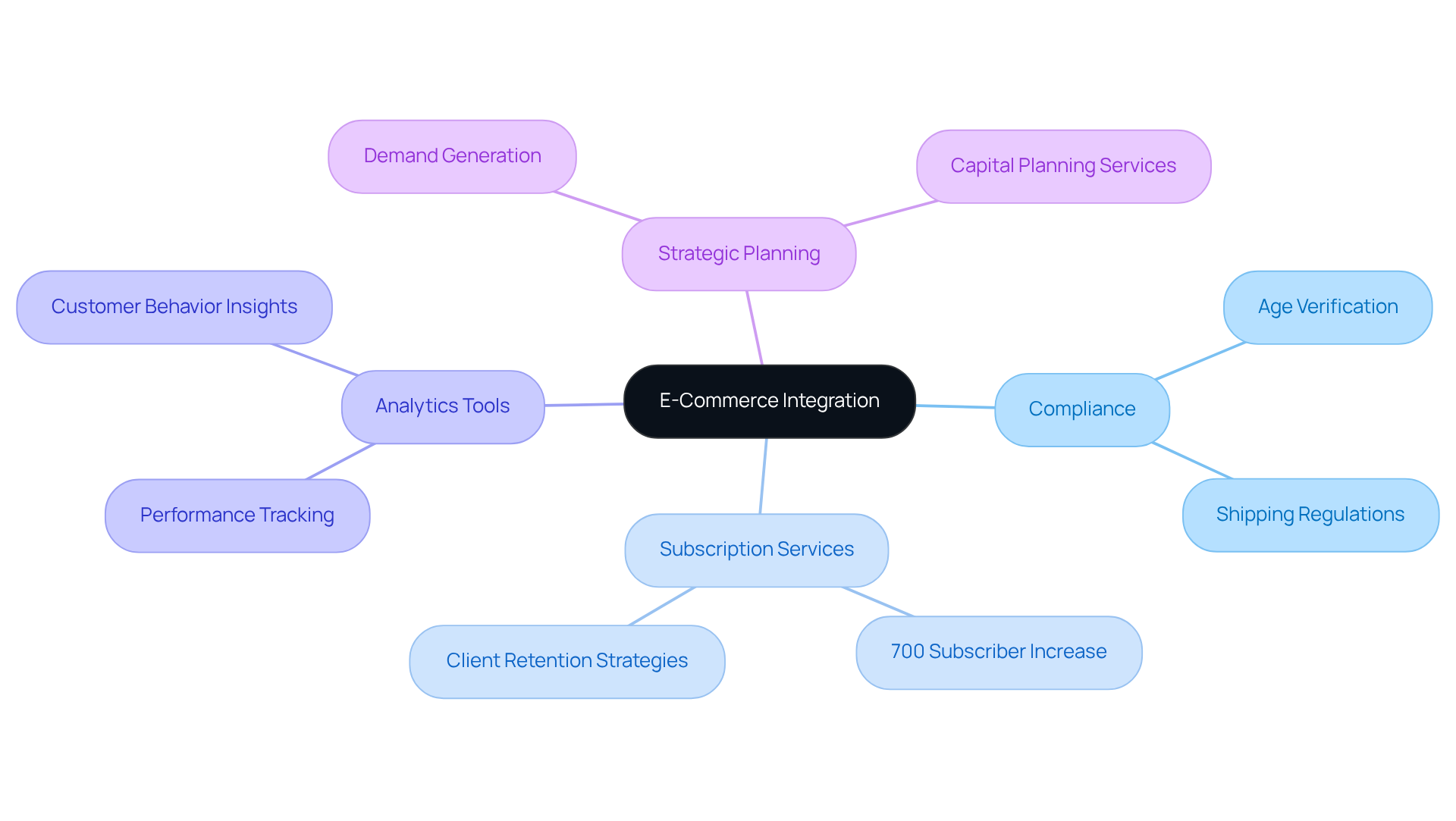
Mobile Optimization: Ensuring Accessibility for On-the-Go Consumers
To enhance accessibility for mobile users, establishments must adopt that seamlessly adjust to various screen sizes. Simplifying navigation, optimizing images to improve loading speeds, and ensuring that all interactive elements are easily tappable are key strategies.
For instance, vineyards can implement user-friendly hamburger menus and clear call-to-action buttons to facilitate smoother navigation. Furthermore, developing mobile apps can significantly elevate the customer experience by offering exclusive content, promotions, and direct access to online stores.
This approach not only fosters engagement but also drives sales, as mobile commerce continues to dominate the market—projected to account for over 72.9% of all e-commerce sales by 2025. By prioritizing these responsive design trends, businesses can effectively meet the expectations of on-the-go consumers, enhance their digital presence, and support sustainable growth through strategic capital planning.
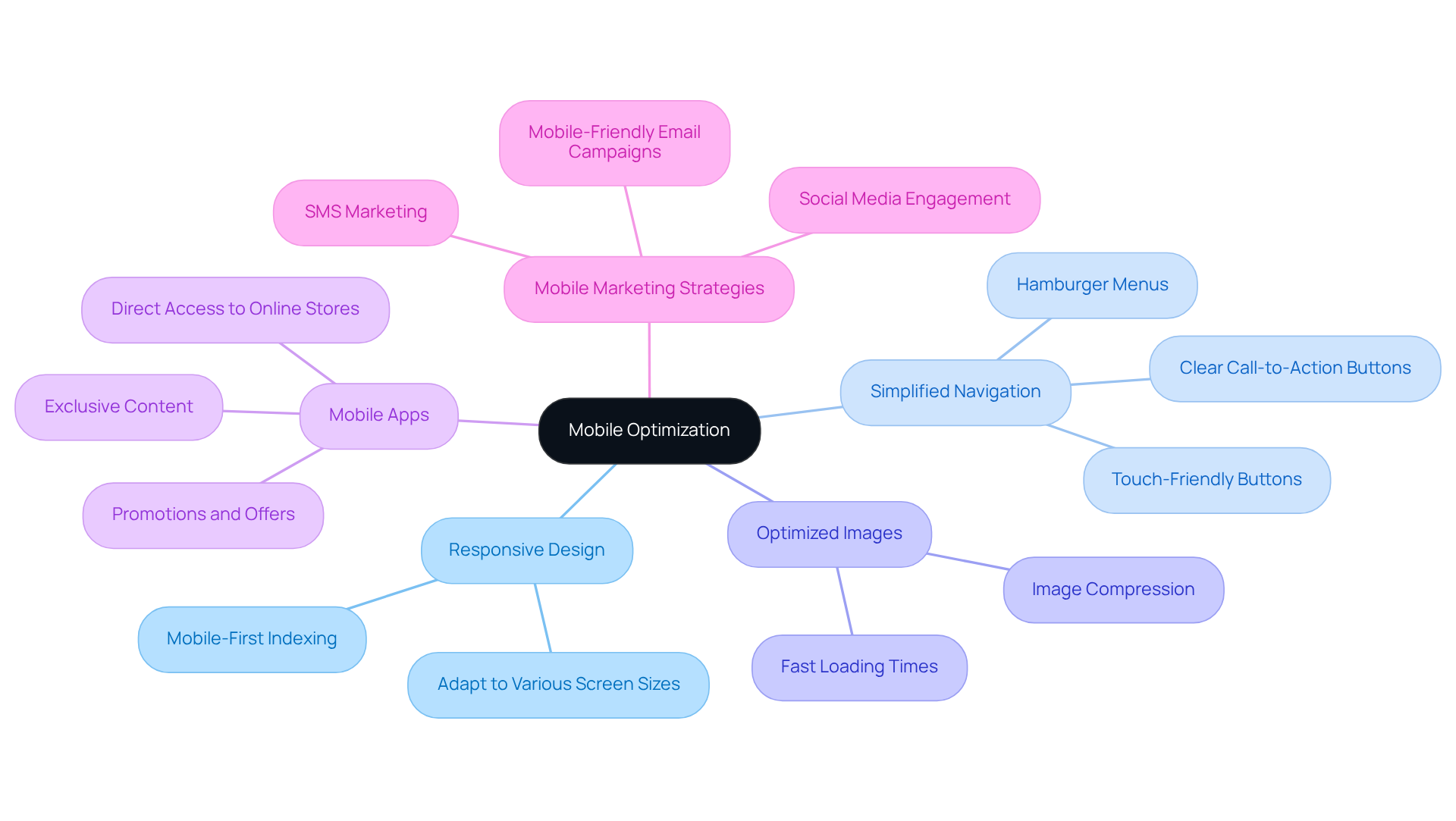
Compelling Storytelling: Building Emotional Connections with Consumers
A winery site can significantly enhance its market presence by leveraging storytelling to communicate its heritage, values, and the distinctive qualities of its wines. Engaging content on a winery site, as well as on social media and marketing materials, plays a crucial role in this process.
By sharing behind-the-scenes narratives about the winemaking journey, the history of the winery site, and the passionate individuals behind the brand, wineries can cultivate deeper emotional connections with consumers. Enocap's transformative direct-to-consumer approaches can help convert casual buyers into devoted club members, ensuring that these narratives resonate effectively with the target audience.
Incorporating customer stories and testimonials not only adds authenticity but also fosters relatability, making the brand more appealing. Statistics indicate that consumers are increasingly drawn to brands that share , with a notable 25.49% increase in sales linked to authentic storytelling strategies.
As the wine sector continues to evolve, producers that prioritize compelling narratives related to their winery site will stand out in a crowded marketplace, driving both engagement and loyalty among their audience. However, vineyards must also navigate challenges in identifying their unique stories and overcoming the fear of vulnerability in sharing them.
Additionally, maintaining consistency in messaging across various channels is essential for reinforcing the brand's story and ensuring that consumers can easily identify authentic narratives, as they are increasingly adept at recognizing fabricated stories.
Furthermore, email marketing remains a crucial approach for nurturing ongoing relationships with consumers, complementing the initial storytelling efforts. By implementing these strategies, family-owned vineyards can thrive for generations, supported by Enocap's expertise in strategic capital planning and DTC growth.
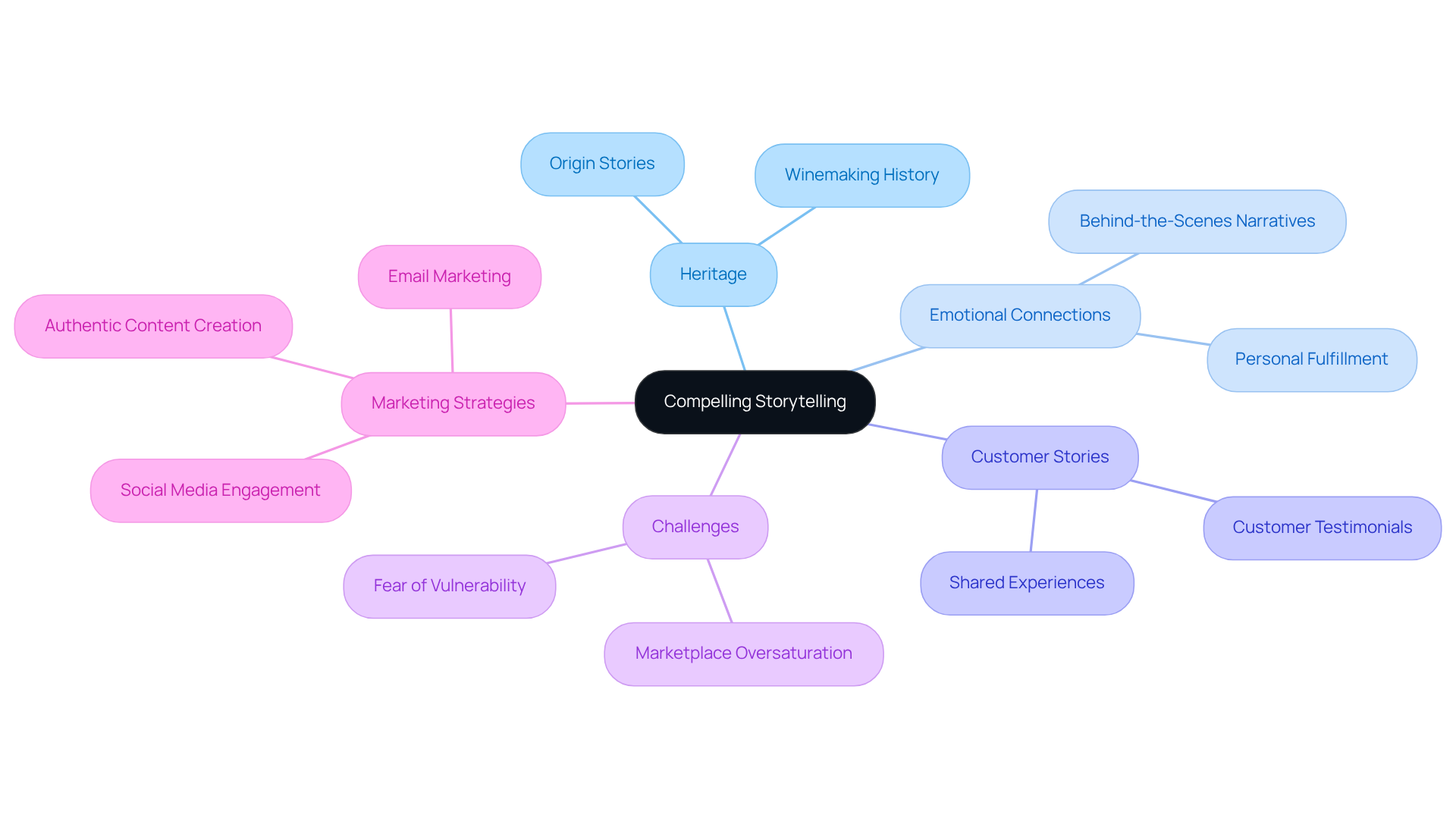
SEO Strategies: Enhancing Online Visibility and Attracting Traffic
To enhance online visibility, establishments in the wine industry must prioritize search engine optimization (SEO) through comprehensive keyword research and the implementation of effective on-page SEO techniques. This involves optimizing title tags, meta descriptions, and image alt texts with relevant keywords—elements that are crucial for improving search rankings. High-quality, informative content that addresses consumer questions and interests not only engages visitors but also boosts search engine performance. Establishments that produce distinctive pages for every type of beverage can significantly enhance their prominence in search outcomes, as each winery site effectively targets specific keywords. As emphasized, "Do I need to create a unique page for every type of wine? YES."
Creating backlinks from reputable sources is another essential strategy, as high-quality backlinks enhance a business's credibility and authority in the digital landscape. Engaging in local SEO techniques, such as optimizing Google Business Profiles and encouraging positive reviews, can further enhance visibility in local search results, attracting more visitors to the establishment's website. With over 70% of vineyards yet to fully leverage , there exists a substantial opportunity for those who do to distinguish their winery site in a competitive market. As noted, "many wineries simply do not own results around their OWN BRAND online."
Regularly tracking SEO performance and adjusting strategies based on analytics will ensure sustained growth and visibility in the ever-evolving digital landscape. Just as a vintner samples beverages during aging, routine evaluations of your SEO performance are imperative.
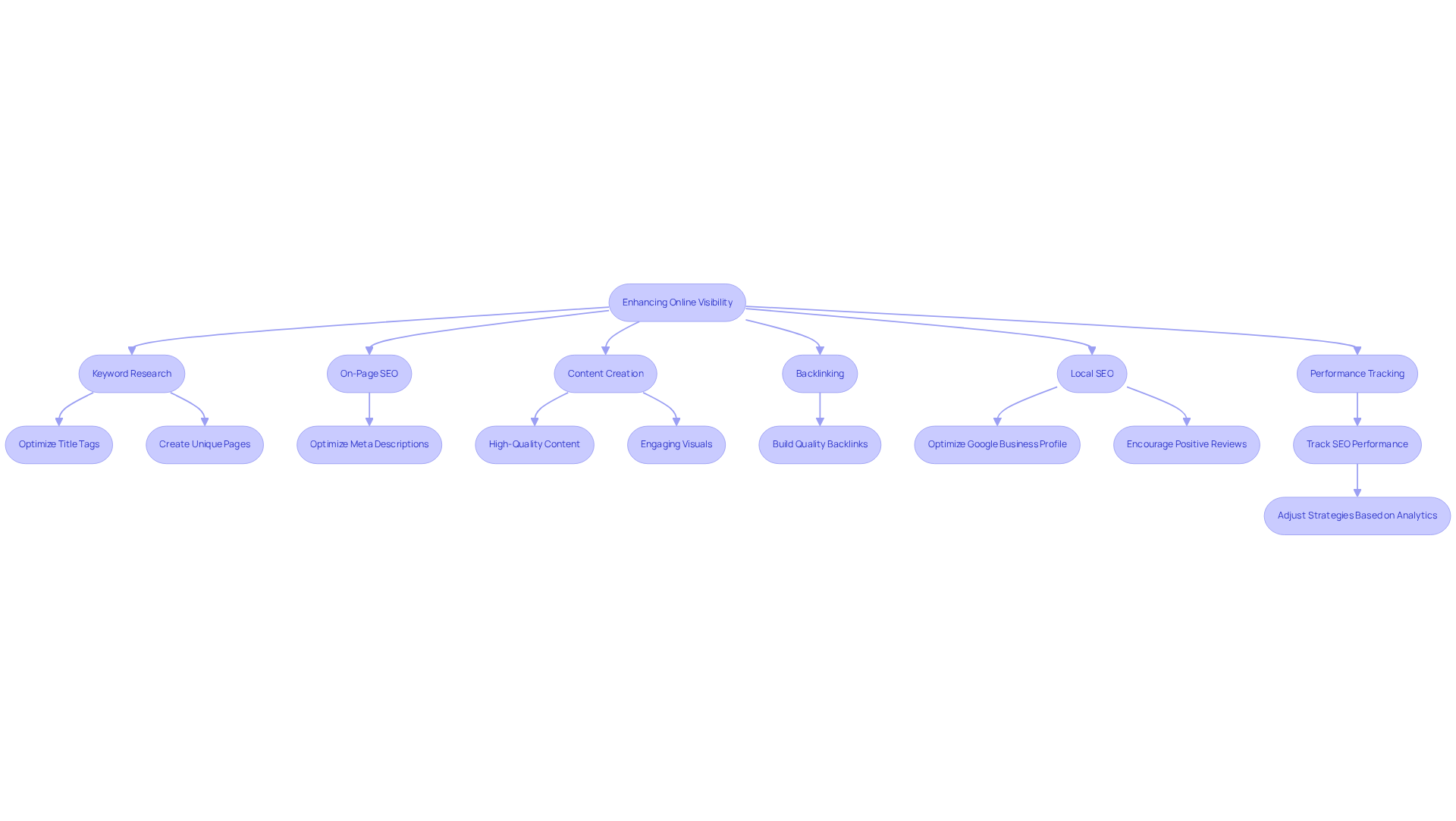
Social Media Integration: Engaging Customers and Promoting the Brand
Wineries can significantly enhance their marketing efforts by actively . By distributing visually attractive material—such as pictures and clips of beverages, vineyards, and occasions—wineries can capture interest effectively.
- Hosting live tastings or Q&A sessions not only fosters interaction but also builds a sense of community among wine enthusiasts.
- Moreover, leveraging user-generated content (UGC) serves as a powerful strategy; encouraging customers to share their experiences not only boosts brand authenticity but also cultivates a more relatable image for the establishment. This approach can lead to increased trust and loyalty among consumers.
Additionally, running targeted ad campaigns can effectively expand reach, attracting new audiences and driving traffic to the establishment's website. By incorporating these strategies, vineyards can develop a dynamic online presence that not only connects with their audience but also enhances their brand identity. The time to act is now—embrace these methods to elevate your winery's marketing strategy.
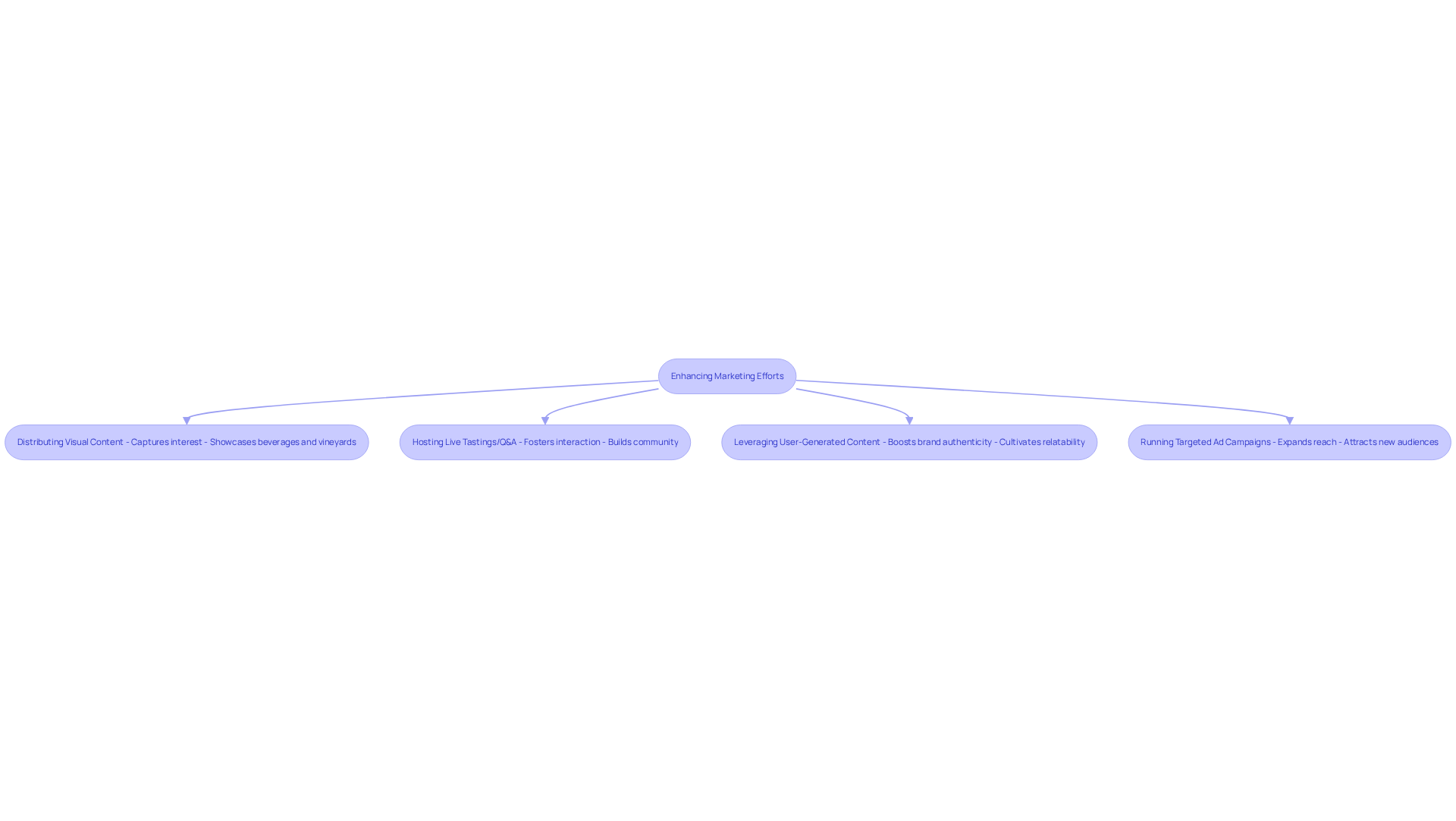
Analytics and Reporting Tools: Tracking Performance for Informed Decision-Making
To thrive in the competitive wine industry of 2025, producers must harness analytics and reporting tools to monitor key performance indicators (KPIs) such as:
- Winery site traffic
- Conversion rates
- Consumer engagement metrics
Analyzing this data equips wine producers with valuable insights into consumer behavior and preferences, allowing them to effectively refine their marketing strategies. Regular performance reviews not only illuminate emerging trends but also assess the effectiveness of campaigns, thereby guiding future business decisions. This data-driven approach is vital for driving growth and enhancing customer satisfaction; wineries that diligently track and respond to their KPIs can significantly bolster their market positioning and operational efficiency.
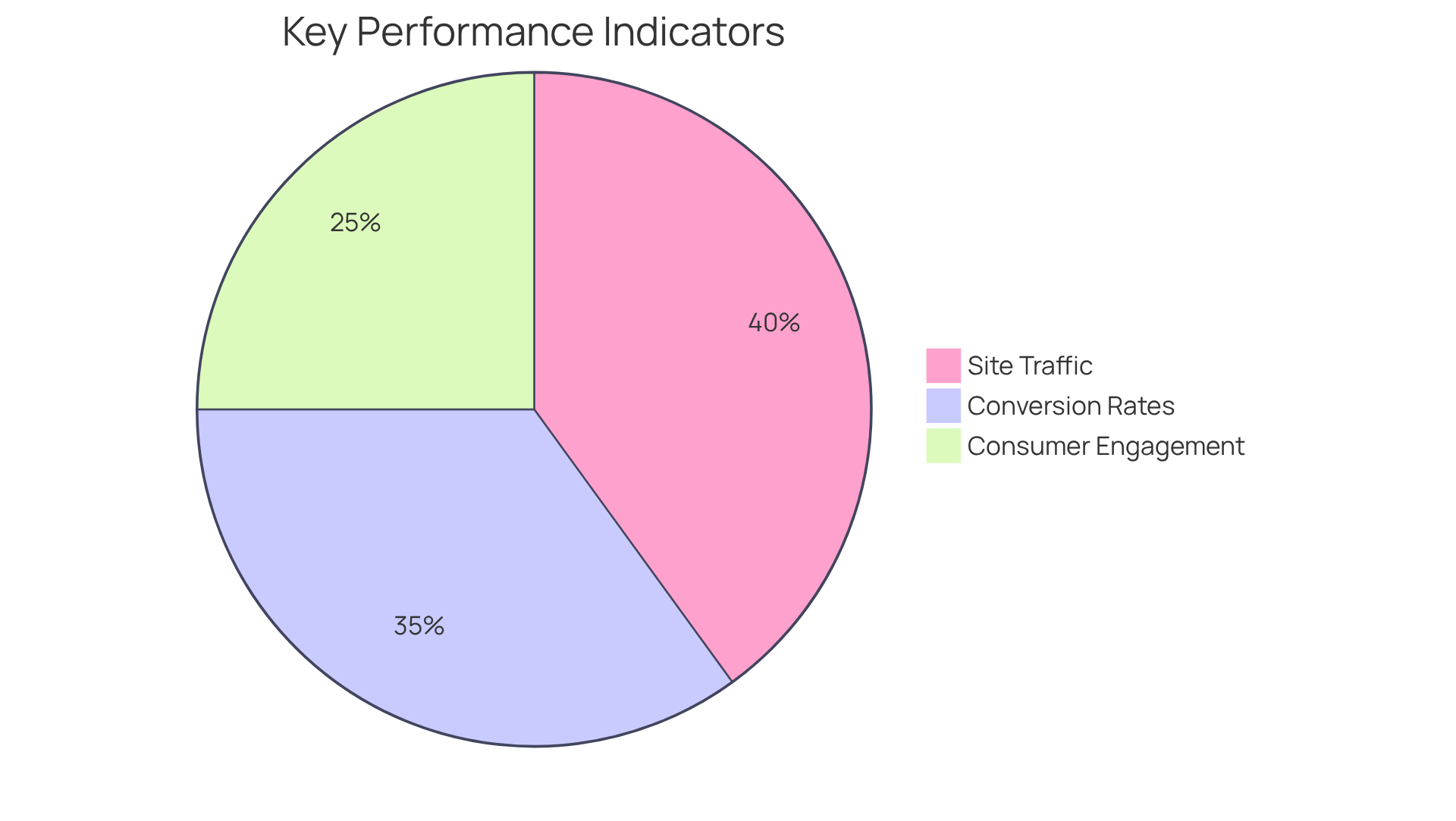
Conclusion
To achieve success in the competitive landscape of the wine industry, implementing essential strategies for enhancing direct-to-consumer (DTC) sales channels is paramount. The ability of a winery to connect with consumers through a seamless online experience, engaging storytelling, and effective marketing techniques significantly influences its growth and sustainability.
Throughout this article, key strategies have been highlighted, including:
- The importance of user-friendly website design
- Mobile optimization
- The integration of e-commerce platforms
Furthermore, fostering community through personalized wine club experiences, utilizing social media for brand engagement, and leveraging analytics for informed decision-making are crucial for driving customer acquisition and retention. Each of these elements plays a vital role in creating a robust framework that not only attracts new customers but also nurtures loyalty among existing ones.
As the wine industry continues to evolve, embracing these strategies will be essential for wineries aiming to thrive in a rapidly changing market. By prioritizing customer experience, employing innovative marketing tactics, and maintaining a strong online presence, wineries can position themselves as leaders in the DTC sales space. The time to act is now; implementing these best practices can pave the way for sustained growth and long-term success in the wine industry.
Frequently Asked Questions
What are the key strategies for building robust direct-to-consumer (DTC) sales channels for beverage producers?
Key strategies include optimizing websites for user experience, integrating email promotions, leveraging social media to drive traffic, and using engaging storytelling to connect with customers.
How does user experience impact online beverage sales?
A positive online shopping experience can lead to higher sales volumes and improved customer retention. Optimized winery sites often report increased traffic and sales growth.
What role does email promotion play in maintaining client involvement?
Email promotions keep clients informed about new releases, promotions, and exclusive offers, fostering loyalty and encouraging repeat purchases.
How can wineries enhance engagement in their wine club memberships?
Wineries can enhance engagement by crafting personalized communications, offering exclusive access to limited releases, and hosting member-only events or virtual tastings.
What is the significance of member attrition rates in wine clubs?
Member attrition rates can fluctuate between 28-36% each year, highlighting the need for effective strategies to retain members and foster loyalty.
How can feedback surveys contribute to wine club member retention?
Regular feedback surveys help assess member needs, making customers feel heard and valued, which can double their likelihood of remaining loyal.
What demand generation techniques can wineries use to drive customer acquisition?
Wineries can utilize targeted marketing campaigns, social media advertising, search engine marketing, and collaborations with influencers to enhance customer acquisition.
How can experiential events influence customer retention and engagement?
Organizing events like beverage tastings or vineyard excursions creates memorable experiences that encourage repeat visits and word-of-mouth referrals.
What is the impact of referral programs on wine club sign-ups?
Referral programs that reward existing customers for introducing new members can significantly increase sign-ups, with some vineyards experiencing up to a 40% increase.
How can strategic capital planning support DTC sales channels?
Strategic capital planning provides the necessary resources for enhancing DTC channels and supports long-term growth through tailored debt, equity, and acquisition solutions.




